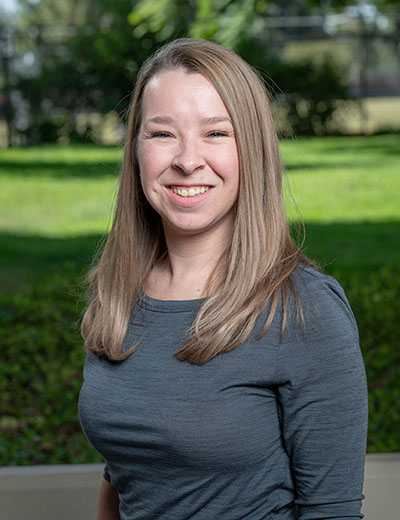Meet Nikki Seymour of geology, whose research explores how deformation related to plate tectonic motion is accommodated in the middle to upper crust, the interactions between magmatism and deformation, and effects of sediment subduction at convergent plate boundaries.

Assistant Professor of Geology Nikki Seymour joined the Oxy faculty as a visiting assistant professor in 2022. Prior to that, she was an NSF Postdoctoral Fellow and Stanford and UC Santa Cruz. She has a Ph.D. from Colorado State University’s Warner College of Natural Resources, a master’s from the University of Texas at Austin’s Jackson School of Geosciences, and a BBA from UT Austin’s McCombs School of Business. Seymour’s research primarily addresses how deformation related to plate tectonic motion is accommodated in the middle to upper crust, the interactions between magmatism and deformation, and effects of sediment subduction at convergent plate boundaries. She is particularly interested in the tectonic evolution of the western United States and how deep rocks are exhumed to the surface.
What attracted you to Occidental?
Geology is a field-based science, and there are few places in the world with better access to geologic field sites. Oxy is within a half-day’s drive of dozens of world-famous research and classroom locations—sites other colleges and universities can only show photos of. It’s an incredible laboratory for both teaching and research, and Oxy prioritizes this kind of immersive educational experience. Beyond that, the Geology Department here at Oxy is energetic and engaged.
Midway through your first semester, what are your impressions of Oxy students?
I am continually impressed with Oxy students—they are curious, engaged, and always willing to help each other out. The community they have built is a joy to be a part of, and it’s deeply rewarding to be a part of their growth during their time here on campus and beyond.
Do you have a favorite class that you are teaching, and why?
I’m presently teaching Geologic Resources for the Green Economy, which focuses on how critical commodities like copper, lithium, rare earth elements, and other important metals are concentrated and ultimately found. These resources are central to the technologies we are developing to move away from hydrocarbon-based economy, and studying them draws on a wide range of geologic disciplines. It’s exciting to see Oxy students draw from across their full range of classes to make connections in this applied setting!
When did you develop an interest in plate tectonic theory?
I was drawn to plate tectonics right from the beginning in my Physical Geology class. I find it incredible that there are places we can walk on the exhumed deep mantle or that one continent can be stitched to another, and more importantly, that we can explain how that’s possible! I am continually impressed by the ability of plate tectonic theory to simply explain the magnitude, rates, and other key aspects of how the Earth works.
What excites you about your research?
As elegant as many of the first-order explanations are, we still have a lot to learn about plate tectonics. How wide is a plate boundary zone, really? If deformation occurs in the interior of a continent—such as the Laramide Orogeny of the western United States—what does this imply about the plate “boundary” processes? How does the heat from molten rock and the weight of mountain belts change the mineralogy of the crust and influence how the crust behaves? How does mass (as solid rock, magma, fluid, and metal) transit the continental crust? These open questions and the advances we’ve made particularly in geochronology—a set of techniques used to establish temporal records of Earth processes—are opening new doors to study when and how quickly rocks respond to plate tectonic stress.
